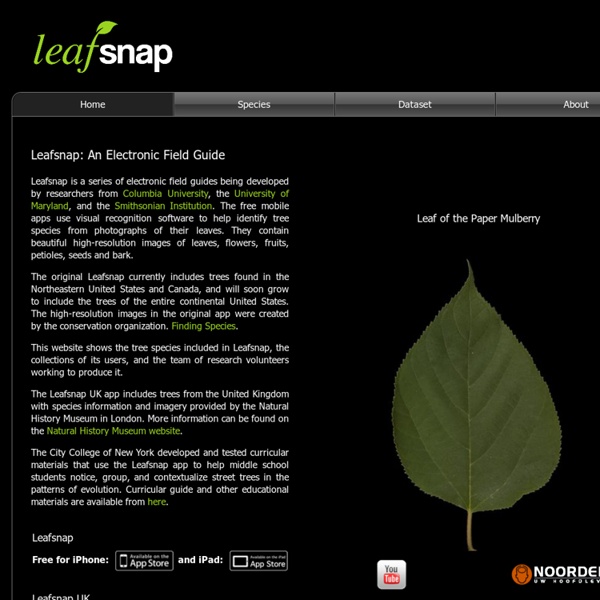Massive Database of 182,000 Leaves Is Helping Predict Plant Family Trees
The story of a plant is etched in its leaves. A tree growing in a cold environment with plenty of water is more likely to have large leaves with many serrated teeth around the edges. But if the same species lives in a warm, dry region, its leaves are likely to be smaller and smoother. Now, an atlas that traces the shapes of 182,000 leaves from 141 plant families and 75 locations around the world shows promise for refining scientists’ ability to read that story.
Discovering Gale Crater: A VR experience from the L.A. Times
Best experienced over a wifi connection Loading initial data Controls: W / S: Forwards / Backwards A / D: Left / Right R / F: Up / Down Q / E: Roll left / right Up / Down: Pitch up / down Left / Right: Yaw left / right Shift: Speed up By Armand Emamdjomeh Take a virtual reality audio tour of the Gale Crater, including geological features and areas that appear to have been carved by flowing water. Narrated by Fred J.
Zoo Atlanta Hangouts On Air
Hangout with us! We’re planning our Hangout lineup for 2014, and are excited about participating in Google's Connected Classrooms with our Virtual Field Trips. If you are an educator interested in participating in a Virtual Field Trip be sure to check out the Connected Classrooms link.
NCFS - Urban & Community Forestry
NCFS - Home >> Urban & Community Forestry What is Urban & Community Forestry? Introduction Contacts Links Electronic Mailing List Grant Programs
Plant Architecture and Its Evolutionary Implications — In Defense of Plants
Another interesting finding borne from these models is that there doesn't seem to be strong correlations between architecture and phylogeny. Although species within a specific genus often share similar architecture, there are plenty of exceptions. What's more, the same form can occur in unrelated species. For instance, Aubréville's model occurs in at least 19 different families. Similarly, the family Icacinaceae, which contains somewhere between 300 and 400 species, exhibits at least 7 of the different models. Alternatively, some families are architecturally quite simple.
For Educators
Search Educational Resources Search hundreds of resources by subject, grade level, type and keyword. These lesson plans and teaching materials support your STEM curriculum. NASA Wavelength A digital collection of Earth and space science resources for educators of all levels – from elementary to college, to out-of-school programs. NASA Education YouTube Channel A-Z List of Publications
11 class activities with sensors you didn’t know your phone had
Mobile devices can do more than we imagine! Rebecca and Chrystian Vieyra developed apps for classrooms to tap into their sensors. (Google Hangout screenshot) Smartphones and tablets are powerful devices that people use every day to make their lives easier. They’re even smarter than we give them credit for. Most of them have sensors we never knew they had.
Nonnative invasive plants of southern forests: a field guide for identification and control
Miller,James H.2003. Nonnative invasive plants of southern forests: a field guide for identification and control. Gen. Tech. Rep.
Apps for Smartphones and Tablets
NASA Spinoff NASA Spinoff profiles the best examples of technology that have been transferred from NASA research and missions into commercial products. From life-saving satellite systems to hospital robots that care for patients and more, NASA technologies benefit society. There's more space in your life than you think! › Get the iPad App → Related: › Technology Innovation iPad App →
Car and Vehicle Science Experiments
Cars are great subjects for science experiments because they are built to move. Cars need fuel to power their engines. The engine turns the gasoline into mechanical energy that moves the gears.
Making Maths: Clinometer
A clinometer is a tool that is used to measure the angle of elevation, or angle from the ground, in a right - angled triangle. You can use a clinometer to measure the height of tall things that you can't possibly reach to the top of, flag poles, buildings, trees. Follow the directions below to create your own clinometer.
AMKK(東 信、花樹研究所)
Botanical Animation “Story of Flowers” Produced by AMKK Directed by Azuma Makoto Illustration by Katie Scott Animation by James Paulley < ABOUT > This “Botanical Animation” is an independent art project from AMKK, who create various works of art using flowers and plants. The animation was developed for kids to show the life cycle of flowers. Azuma made the original story and requested London-based illustrator and animator Katie and James breathe life into the animation with their beautiful work. < STORY > Many different flowers are growing beautifully and strongly in this world. Taking their roots in the earth, sprouting, blooming, pollination by birds and insects, living on in spite of rain, wind and storms. They pass on the baton of life, rebirth and decay. Everything is so in a continuous, endless cycle.
The Elements Revealed: An Interactive Periodic Table
In the October 2011 issue of Scientific American, we celebrate the International Year of Chemistry. Learn more about its impact on our daily lives in our Special Report. UPDATED: 06/18/2013 In honor of the 2013 Lindau meeting, which focuses on chemistry, we have updated our interactive periodic table with links to Nature Chemistry's In Your Element essay series.



